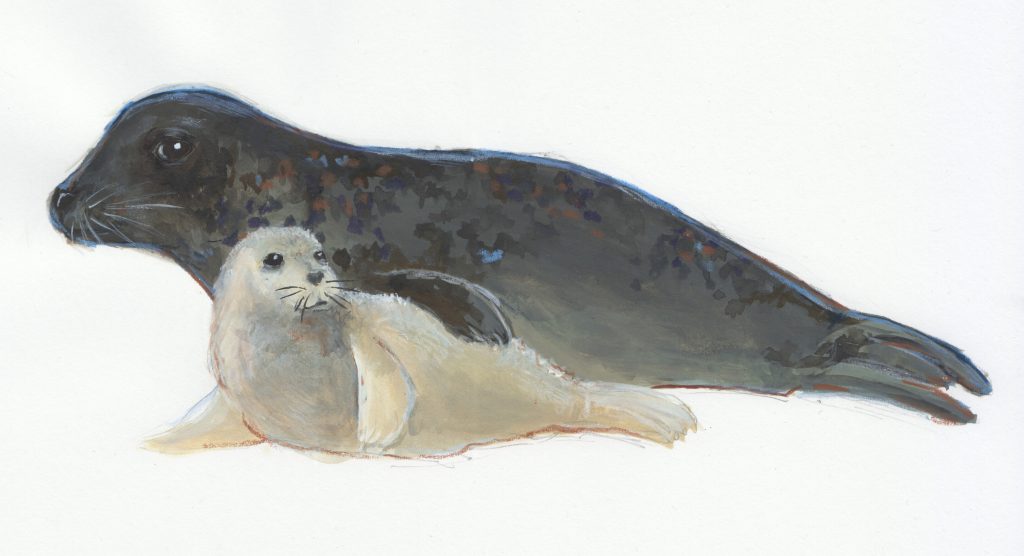The Grey Seal (Halichoerus grypus), with its enigmatic gaze and vocal personality, is the inspiration behind the Celtic legends of selkies.

| Habitat | Coastal waters and rocky shores of the North Atlantic Ocean and Baltic Sea |
|---|---|
| Size & Weight | Males: 2.5–3.3 meters long, 170–310 kg; Females: 1.8–2.2 meters long, 100–190 kg |
| Status | Least Concern, but faces threats from pollution, overfishing, climate change, and habitat destruction |
Why do grey seals need our help?
- Marine debris like fishing gear is a threat especially to curious and playful juvenile grey seals who can get easily entangled
- Climate change affects ocean habitats, for example with a higher frequency and intensity of storms that can get moms and pups seperated or lead to injuries in inexperienced seals who don’t seek shelter inland.
- Human disturbance can cause seal pups to be abandoned, and frequent disturbances can drain seals’ energy reserves, disrupting their ability to rest, hunt effectively, and maintain overall health.
- Chemical pollution like oil spills or industrial runoff can harm seals directly or contaminate their food sources.
Who helps grey seals?
Grey seals are born with white lanugo fur and molt into their adult fur after about a month. By then they are already weaned, but need to finish molting until they can learn to hunt.
Grey seals clap their front flippers underwater to produce loud noises as a way of communication.
Like other seals, grey seals are vocal learners and can modify their vocalizations. A grey seal in a research project learned to sing the Star Wars theme and Twinkle, Twinkle.
Grey seals, especially males, have been recorded killing harbor porpoises and harbor seals, and even pups of their own species. This might indicate a shift in food sources due to overfishing.
In the western Atlantic, grey seals have almost been hunted to extinction, but made a big return from the 1980s onward after being protected by the Marine Mammal Protection Act.
